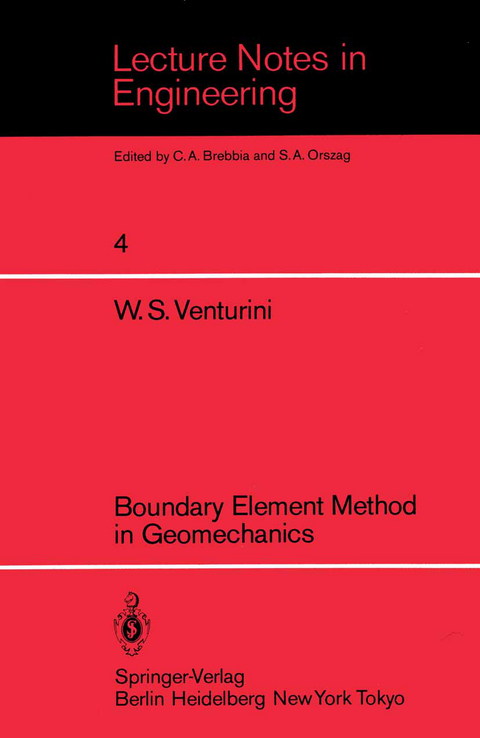
Boundary Element Method in Geomechanics
Springer Berlin (Verlag)
978-3-540-12653-9 (ISBN)
1 Introduction.- 2 Material Behaviour and Numerical Techniques.- 2.1 Introduction.- 2.2 Linear Elastic Material Problems.- 2.3 Nonlinear Elastic Material Problems.- 2.4 Inelastic Material Problems.- 2.5 Time-Dependent Problems.- 3 Boundary Integral Equations.- 3.1 Introduction.- 3.2 Governing Equations and Fundamental Solutions.- 3.3 Integral Equations.- 3.4 Body Force Problem.- 3.5 Prestress Force Problem.- 3.6 Temperature Shrinkage and Swelling.- 4 Boundary Integral Equations for Complete Plane Strain Problems.- 4.1 Introduction.- 4.2 Governing Equations and Fundamental Solutions.- 4.3 Integral Equations for Interior Points.- 4.4 Boundary Integral Equation.- 5 Boundary Element Method.- 5.1 Introduction.- 5.2 Discretization of the Integral Equations.- 5.3 Subregions.- 5.4 Traction Discontinuities.- 5.5 Thin Subregions.- 5.6 Solution Technique.- 5.7 Practical Application of Boundary Element on Linear Problems.- 6 Notension Boundary Elements.- 6.1 Introduction.- 6.2 Rock Material Behaviour.- 6.3 Method of Solution.- 6.4 Application of No-Tension in Rock Mechanics.- 7 Discontinuity Problems.- 7.1 Introduction.- 7.2 Plane of Weakness.- 7.3 Analysis of Discontinuity Problems.- 7.4 Numerical Applications.- 8 Boundary Element Technique for Plasticity Problems.- 8.1 Introduction.- 8.2 Elastoplastic Problems in One Dimension.- 8.3 Theory of Plasticity for Continuum Problems.- 8.4 Numerical Approach for the Plastic Solution.- 8.5 Practical Applications in Geomechanics.- 9 Elasto/Viscoplastic Boundary Element Approach.- 9.1 Introduction.- 9.2 Time-Dependent Behaviour in One Dimension.- 9.3 Elasto/Viscoplastic Constitutive Relations for Continuum Problems.- 9.4 Outline of the Solution Technique.- 9.5 Time Interval Selection and Convergence.- 9.6 Elasto/Viscoplastic Applications.-10 Applications of the Nonlinear Boundary Element Formulation.- 10.1 Introduction.- 10.2 Strip Footing Problem.- 10.3 Slope Stability Analysis.- 10.4 Tunnelling Stress Analysis.- 11 Conclusions.- References.- Appendices.
| Erscheint lt. Verlag | 1.8.1983 |
|---|---|
| Reihe/Serie | Lecture Notes in Engineering |
| Zusatzinfo | VIII, 212 p. 4 illus. |
| Verlagsort | Berlin |
| Sprache | englisch |
| Maße | 170 x 244 mm |
| Gewicht | 420 g |
| Themenwelt | Mathematik / Informatik ► Mathematik ► Algebra |
| Mathematik / Informatik ► Mathematik ► Angewandte Mathematik | |
| Naturwissenschaften ► Geowissenschaften ► Geologie | |
| Naturwissenschaften ► Geowissenschaften ► Meteorologie / Klimatologie | |
| Technik ► Bauwesen | |
| Schlagworte | Bodenmechanik • boundary • Calculus • Integralverfahren • Mechanics • Plasticity • Temperature |
| ISBN-10 | 3-540-12653-8 / 3540126538 |
| ISBN-13 | 978-3-540-12653-9 / 9783540126539 |
| Zustand | Neuware |
| Haben Sie eine Frage zum Produkt? |
aus dem Bereich


